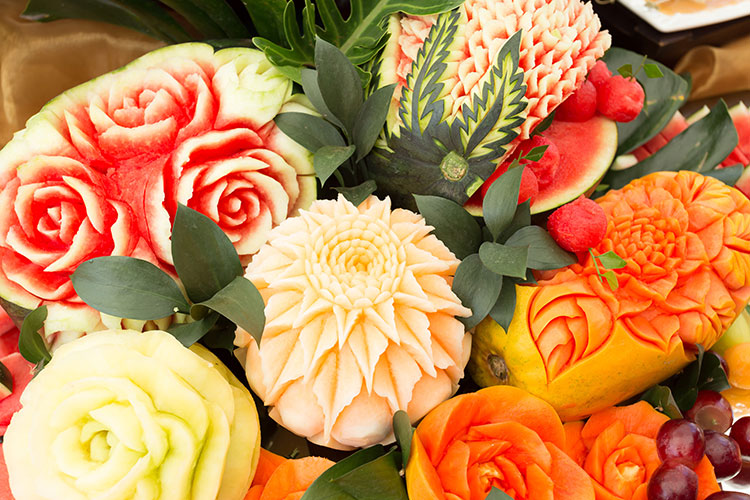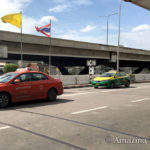Fruit carvings are traditional decorations inherited in Thailand that adds flowers to court dishes.
table of contents
What is fruit carving?
Fruit carving is another main ingredient that makes the meal table excitement.
A court cuisine that will entertain not only taste but also eyes.
Fruit carvings are said to be traditional decorations that further complement the luxury of such court cuisine, meaning that carved vegetables and fruits with a thin knife.
Roses flowers are carved in watermelon, lotus flowers are carved in melons!
Carving is an indispensable part of the decoration of court dishes, a fruit art work created from the tip of an elongated knife.
Fruits that are thick and easy to process are used for carving, such as watermelon, melon, pineapple, orange and papaya.
The history of carving is old, it is said that it started about royal chefs around the time of the Sukhothai dynasty in about 13 century.
Anything from chilli to watermelon can be carved, but colorful fruits are still carving flowers.
By the way, I feel wasteful, but I will only appreciate the finished product without eating it.
This is considered common sense in Thai fruit power country, and in Thailand it is an important traditional art as home caring at elementary school as carving classes are both gender and woman.
It is also used as a gift by engraving on soap for application.
Experience fruit carving at ITDA (Thailand Cultural Exchange Center)
Those who want to learn fruit carving while traveling in Bangkok have "Thai Traditional Culture Experience Lessons" held at ITDA (Thai Cultural Exchange Center) on HIS Optional Tour.
I am learning carving, Thai dance, dressing of national costumes, and have classes in Japan.
One day experience course for travelers who do not need admission fee is perfect for commemoration of Thailand trip! There are also many Japanese students, it seems to be a popular classroom with an atmosphere that makes it easy to participate even if you do not understand Thai.
- Monday - Saturday 9: 00 - 18: 00 (holiday)
* Reservations are accepted up to 2 days ago (if Sundays are included, 3 days before) - Prices
- Carving class: 2 time 780B
Traditional sculpture lesson with fruit and soap with knife - Thai dance lesson: 2 time 1,450B
Lesson, hair making, dressing, photography & gifts, with confirmation - Ethnic costume experience: 1 time 1,200B
Hair make, dressing, photography & gifts
- Carving class: 2 time 780B
- ITDA (Thai Cultural Exchange Center) Access: About 12 minutes by foot from BTS Phrom Phong Station
※ As for the tour, the contents may be changed, so we recommend you to check with the organizing company before traveling.
Who wants to learn in earnest?
ITDA (Thai Cultural Exchange Center) has beginner, intermediate and advanced courses from beginner to learn from the fundamentals using textbooks written in Japanese, and each lesson seems to be 48 each course.
After completing the course, if the training was received, the qualification of the certified lecturer was also issued and it was written on HP that it can be taught as a lecturer in Japan.
Also, there is a branch in Suidobashi in Tokyo and it seems that we can continue to learn after returning home. (There are also 1 days experience course here)







